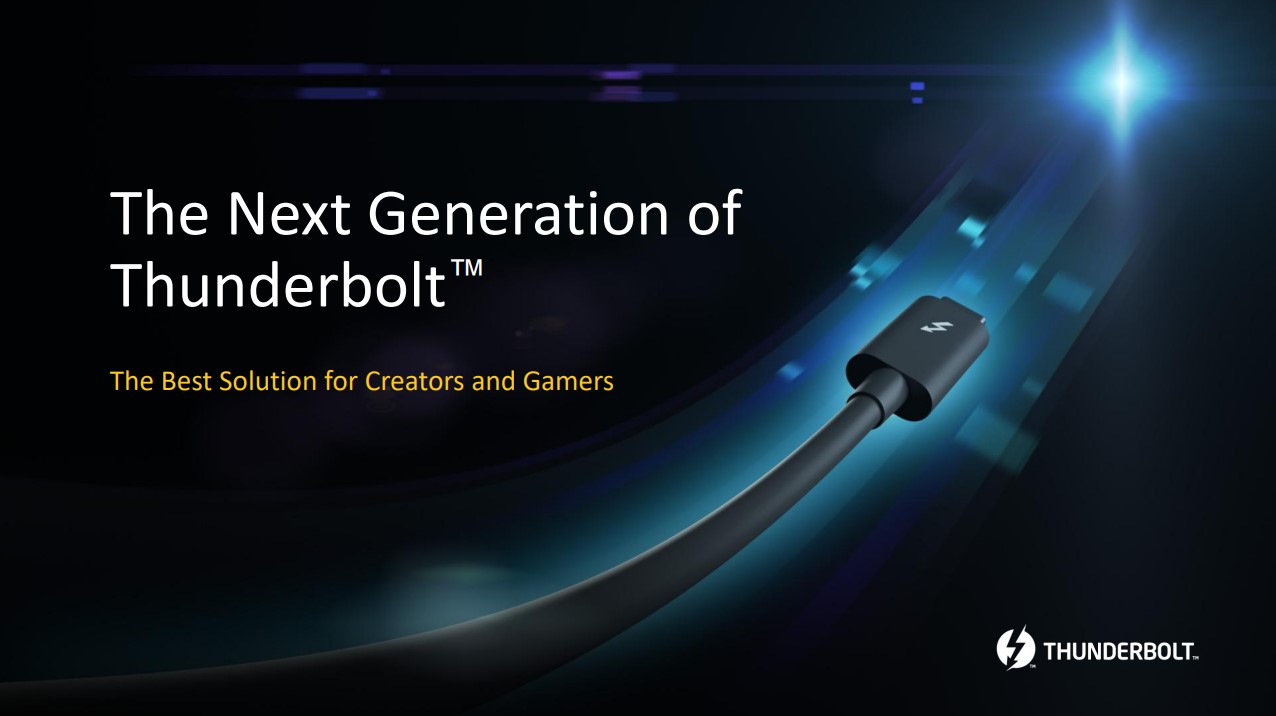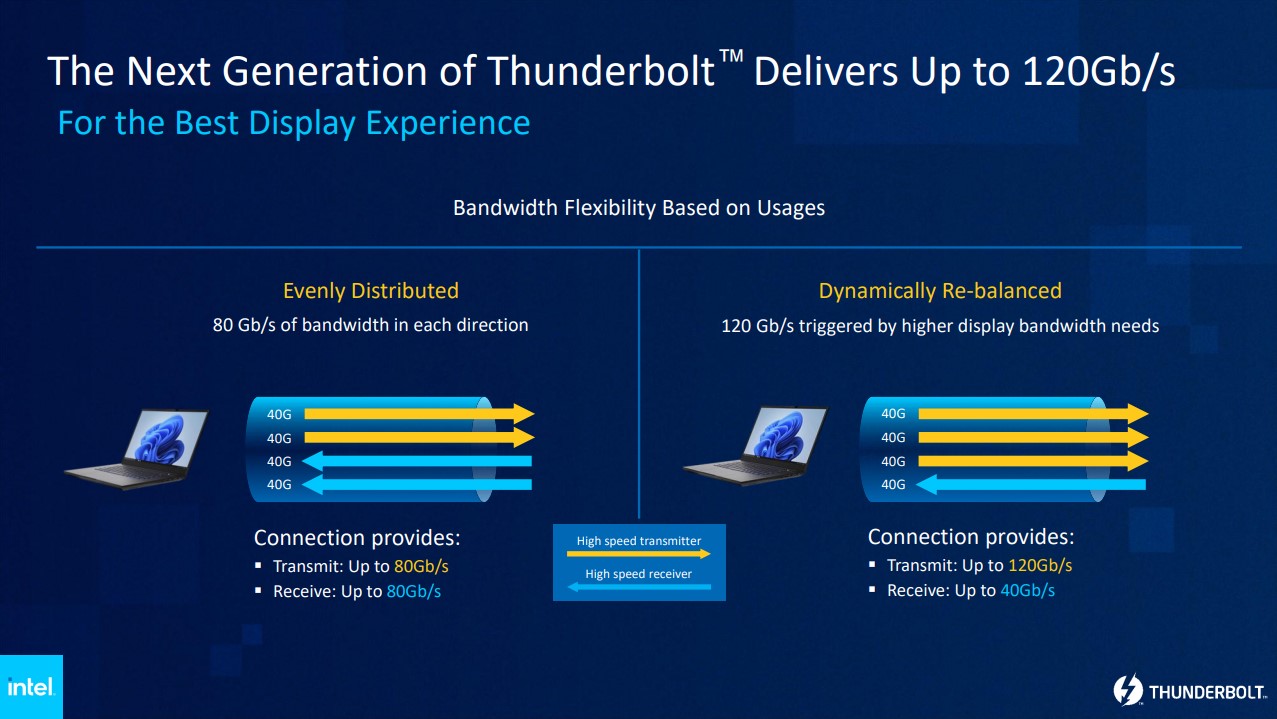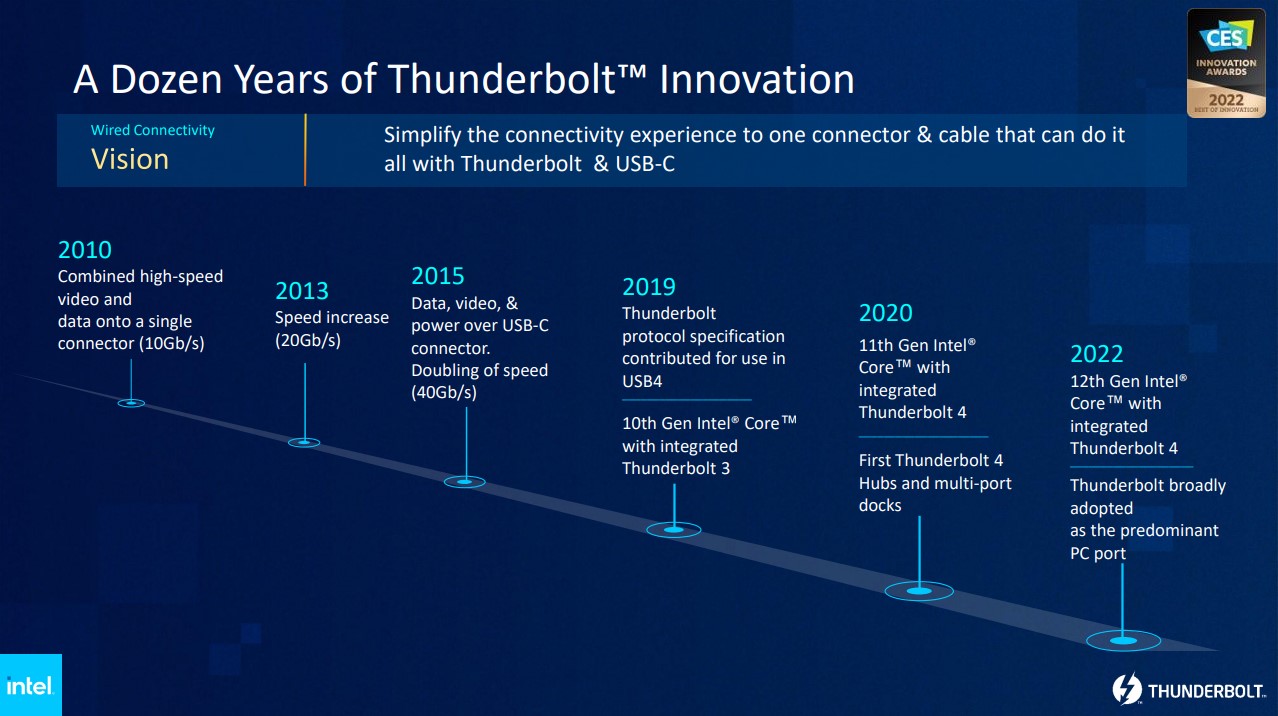
What you need to know
- Intel has shown off an early version of its "next-gen" Thunderbolt technology that's centered around the new USB4 v2 and DisplayPort 2.1 standards.
- Next-gen Thunderbolt will be capable of 80Gb/s bi-directional bandwidth, jumping up to 120Gb/s in specific scenarios.
- Next-gen Thunderbolt will work with passive cables up to one meter (3.2 feet)
- Next-gen Thunderbolt will be backward compatible with older Thunderbolt, USB, and DisplayPort standards.
Intel has officially announced that it's working on a "next-gen" version of Thunderbolt based on the new USB4 v2 data and DisplayPort 2.1 video standards. While Intel has yet to officially name the technology and is still calling it "next-gen," this will be the fifth Thunderbolt version when it eventually launches. It aims to be the best solution for creators and gamers who need massive bandwidth throughput to handle high-res displays, external GPUs, and more with just one cable.
Next-gen Thunderbolt will effectively double the bi-directional bandwidth of Thunderbolt 4 to 80Gb/s across four lanes. Furthermore, in certain scenarios where extra bandwidth is needed to power something like an 8K display, one of the four lanes will change directions to offer a 120Gb/s transmit speed and 40Gb/s receive speed.
Intel claims that next-gen Thunderbolt will automatically realize when the extra transmit speed is required (like when you connect a high-res display), and all other attached accessories will follow suit. PCIe data throughput has also been doubled. Intel confirmed that the new technology operates using PAM3 signal modulation (allowing three bits to be transferred per clock cycle), as was spotted last year in a leaked photo from the Thunderbolt labs.
Intel has only so far shown off a prototype product for its next-gen Thunderbolt, but it has guaranteed that it will be backward-compatible with older versions of Thunderbolt, USB, and DisplayPort. Intel also says next-gen Thunderbolt will work with passive cables up to one meter (3.2 feet) in length. Yes, next-gen Thunderbolt will continue using the physical USB-C connector.
Intel's Thunderbolt technology, which combines PCIe, DisplayPort, and power together into one cable, has been around since its inception in 2010, most recently launching the fourth iteration in 2020.
Thunderbolt 4 — which took over for Thunderbolt 3 and will give way eventually for "next-gen" Thunderbolt — offers up to 40Gb/s bandwidth, PCIe bandwidth up to 32Gb/s, and some extra protection against connected threats. It's currently the best connection standard available, spawning a number of powerful Thunderbolt 4 docking stations that can alleviate your connectivity woes.
All the latest news, reviews, and guides for Windows and Xbox diehards.

Cale Hunt brings to Windows Central more than nine years of experience writing about laptops, PCs, accessories, games, and beyond. If it runs Windows or in some way complements the hardware, there’s a good chance he knows about it, has written about it, or is already busy testing it.


